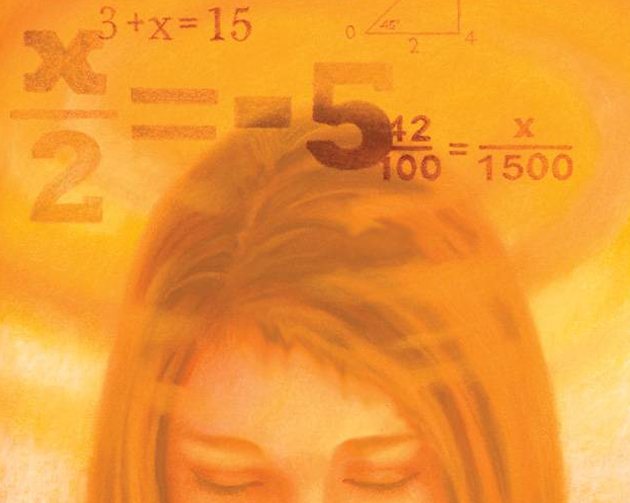Divide and Multiply
An SDSU program funded by QUALCOMM bucks a national trend.

Ask a group of first graders to divide three by four and the response will be a sea of faces staring at you in varying degrees of confusion.
But if you ask the same group to divide three cookies equally among four friends, you may, in fact, get the correct answer to what is a moderately sophisticated mathematics problem.
Teaching children math as a component of their daily lives is not a new idea; rather, it is one ingredient in a complex recipe to improve math-teaching effectiveness in San Diego County school districts.
In 2000, with a grant from QUALCOMM Incorporated, San Diego State University pioneered the Improving Student Achievement in Mathematics (ISAM) program.
ISAM's director, Nadine Bezuk, a professor of teacher education at SDSU, questioned traditional pedagogy during her years as a middle school math teacher. She had prepared what she thought was a clear, coherent lesson on fractions. But many students failed the test.
"I realized that students presented with the same information had different ways of processing it, and I decided that I needed to learn more about how kids learn math."
Bezuk brought that philosophy to ISAM, whose instructors have trained nearly 2,300 teachers in both mathematics content knowledge and teaching effectiveness. Through those teachers, more than 200,000 students county-wide have been affected by ISAM, with measurable results.
For example, in the Sweetwater School District, the passing rate for 10th grade students taking the high school exit exam rose from 61 percent to 78 percent after the district partnered with ISAM.
The results in Sweetwater stand in sharp contrast to the national trend. American 15-year-olds ranked 25 among 30 developed nations in math literacy and problem-solving in a recent international assessment by the Organization of Economic Cooperation and Development (OECD).
Concerned about the relatively poor U.S. rank in student math achievement, the National Mathematics Advisory Panel concluded that K-8 math teachers need more rigorous preparation and training to improve their effectiveness in the classroom.
ISAM responds to that concern, giving teachers the specialized content knowledge they need to teach math.
"Relative to math, it's a very different world out there from the one in which many teachers were trained," said Jane Gawronski, director of assessment and outreach for ISAM.
At the same time, ISAM instructors encourage teachers to build math skills in ways that make sense to their students. That might involve standing back and allowing different students to use different strategies.
Many teachers involved in ISAM training are also enrolled in SDSU’s two-year math specialist certificate program.
Angelica Hueso was a first-grade teacher at Burbank Elementary School when she began working towards the certificate. During her second year in the program, she began to apply what she had learned to her own classroom.
"I could see the difference very quickly," Hueso recalled. "My students were thinking and reasoning beyond a first-grade level."
Multiply Hueso's results by 2,000 or 3,000 and it becomes clear that ISAM is helping San Diego County students acquire the math knowledge they’ll need in the real world.



